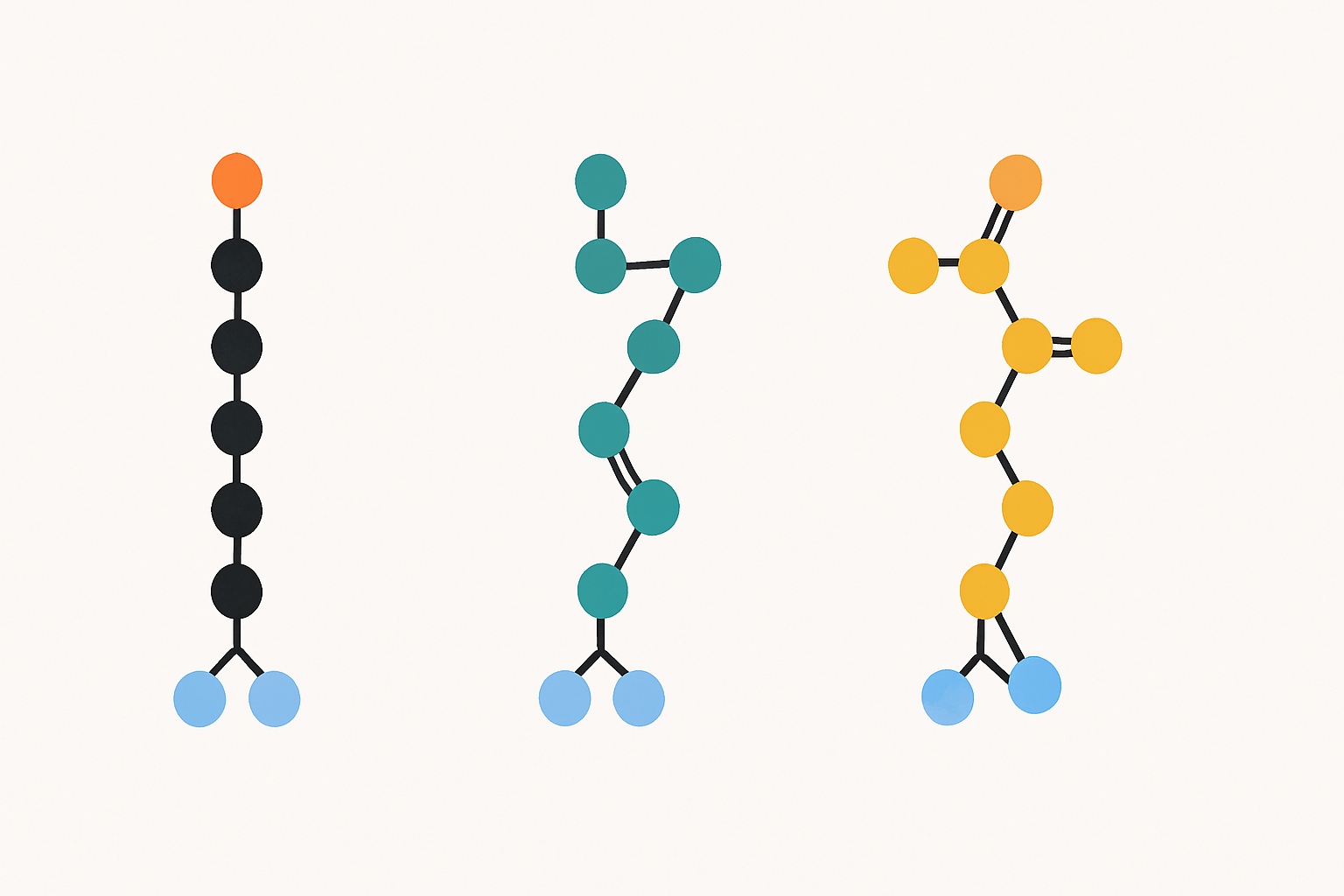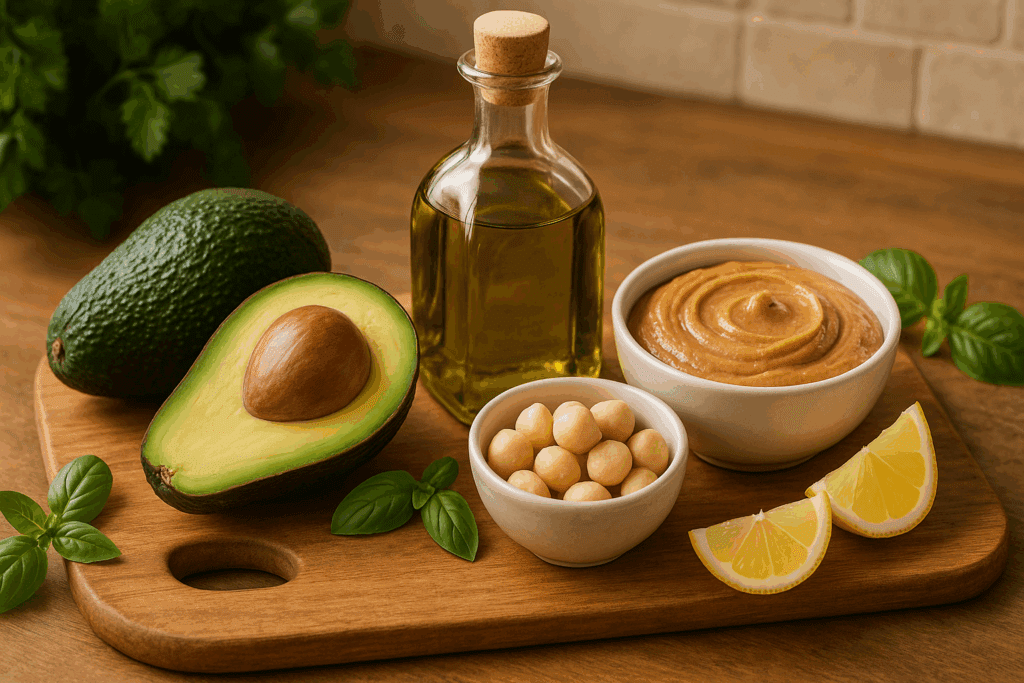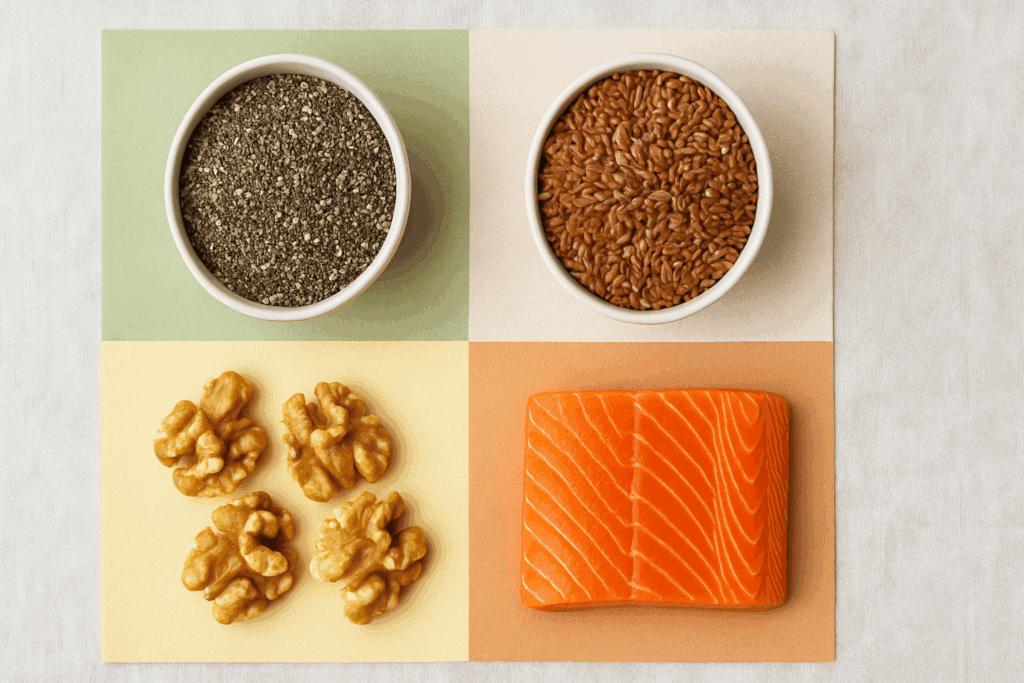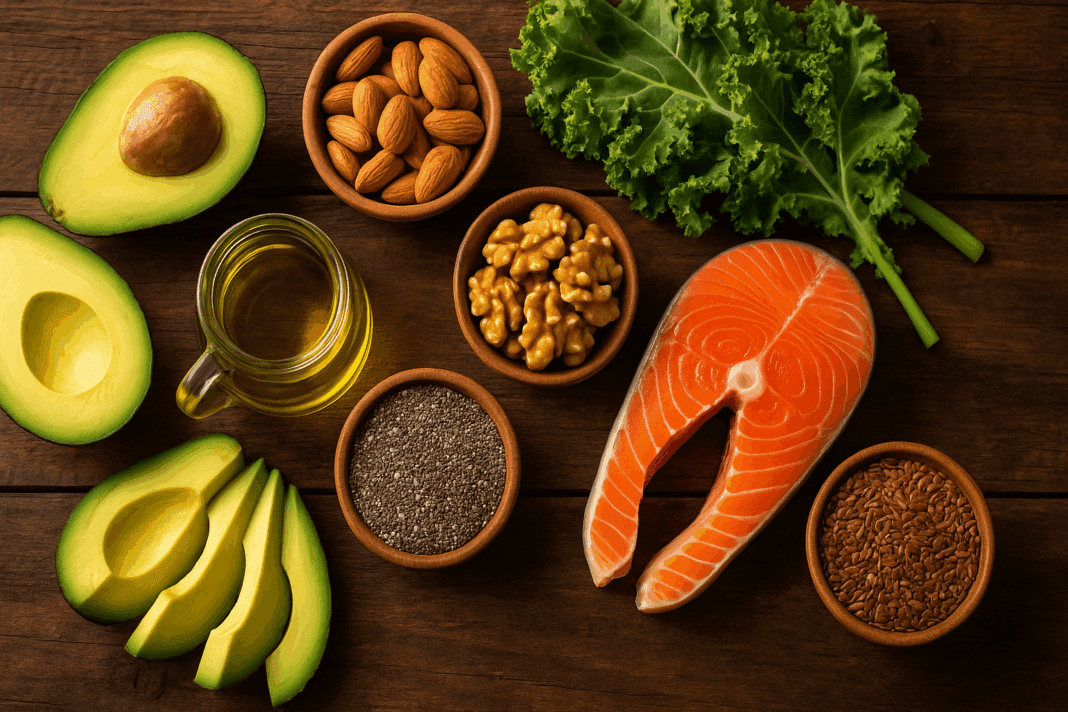Why Understanding Monounsaturated Fat Matters for Your Health
In today’s wellness-conscious world, the question of whether fat is friend or foe continues to spark debate. From trendy keto diets to heart-healthy meal plans, fats have taken center stage in nutrition conversations. But not all fats are created equal. Some, like trans fats, are known culprits behind cardiovascular problems, while others—such as monounsaturated and polyunsaturated fats—are now seen as essential allies in disease prevention and overall wellness. So, is monounsaturated fat good or bad? And what does the research actually say about monounsaturated fat examples, polyunsaturated foods, and their role in heart health? The answers require a closer look at how these fats function, where they come from, and how they fit into a balanced diet.
You may also like: Macronutrients vs Micronutrients: What the Simple Definition of Macronutrients Reveals About Your Diet and Health

What Are Monounsaturated Fats and How Do They Differ from Other Fats?
Monounsaturated fats, often abbreviated as MUFAs, are a type of unsaturated fat that contains one double bond in their chemical structure—hence the prefix “mono.” This single double bond distinguishes them from polyunsaturated fats, which contain multiple double bonds. A monounsaturated fatty acid, sometimes referred to as a monounsaturated acid, tends to remain liquid at room temperature and may solidify when chilled. These fats are considered heart-healthy because they can improve blood cholesterol levels and reduce inflammation, a key contributor to cardiovascular disease.
The body can produce monounsaturated fat, but we also consume it through various food sources. While saturated fats—found in butter, red meat, and full-fat dairy—have long been associated with increased risk of heart disease, monounsaturated fats are now viewed in a far more favorable light. Not only do they serve as an energy source, but they also assist in the absorption of essential fat-soluble vitamins such as A, D, E, and K.

Monounsaturated Fat Examples: Foods That Promote Heart Health
Knowing what monounsaturated fats are is one thing—but where can you actually find them in your diet? Some of the best monounsaturated fat examples include olive oil, avocados, nuts like almonds and pistachios, and seeds such as sesame and pumpkin. Avocados are rich in monounsaturated fatty acids and offer additional nutrients like potassium and fiber. Natural peanut butter, when made with minimal additives, is another excellent source of mono fat that combines taste with cardiovascular benefits.
Extra virgin olive oil remains one of the most celebrated monounsaturated fat examples, largely due to its central role in the Mediterranean diet. It contains oleic acid—a primary monounsaturated acid—which has been linked to anti-inflammatory effects and improved lipid profiles. Another lesser-known yet equally beneficial source is macadamia nuts, which boast one of the highest concentrations of monounsaturated fat among nuts.
Is Monounsaturated Fat Good or Bad? Exploring the Research
The question “is monounsaturated fat bad?” often arises from historical misunderstandings about dietary fat in general. For many years, fat was demonized in nutritional guidelines. However, modern research has made it clear that the type of fat, rather than the amount alone, plays a critical role in health outcomes. Numerous studies have found that replacing saturated fats with monounsaturated fats can lower LDL (bad) cholesterol while raising HDL (good) cholesterol. This shift in lipid profile can significantly reduce the risk of cardiovascular events.
One landmark trial, the PREDIMED study, revealed that a Mediterranean diet rich in monounsaturated fats—primarily from olive oil and nuts—led to a substantial decrease in heart attacks, strokes, and cardiovascular deaths. The evidence continues to grow in support of monounsaturated fats as a cornerstone of a heart-healthy diet.
However, context is key. Eating monounsaturated fats as part of ultra-processed foods or in excessive quantities can still pose health risks. While mono fat is beneficial, it is energy-dense. Overconsumption may contribute to weight gain if not balanced with physical activity and calorie needs.

Are Monounsaturated Fats Good for You Beyond Heart Health?
The benefits of monounsaturated fats extend well beyond cholesterol management. Emerging research suggests these fats may play a role in improving insulin sensitivity, reducing oxidative stress, and supporting cognitive health. In a clinical study published in Diabetes Care, participants with type 2 diabetes who followed a diet rich in monounsaturated fatty acids experienced better blood sugar control compared to those on a high-carbohydrate diet.
There’s also evidence to suggest that monounsaturated fats may support hormonal balance and enhance nutrient absorption. Because many essential vitamins are fat-soluble, consuming them with healthy fats improves their bioavailability. For example, adding avocado or olive oil to a salad helps the body absorb antioxidants like beta-carotene and lycopene more efficiently.
Additionally, mono fat has been associated with decreased markers of inflammation. Chronic inflammation is linked to numerous conditions, including heart disease, arthritis, and even certain cancers. Thus, incorporating monounsaturated fats into daily meals may offer wide-ranging protective effects.

Polyunsaturated Foods: A Critical Companion to Monounsaturated Fats
While monounsaturated fats receive a great deal of attention, polyunsaturated fatty acids (PUFAs) are equally important. Polyunsaturated foods contain fats with more than one double bond, offering a different set of health benefits. These include omega-3 and omega-6 fatty acids, both of which are essential—meaning the body cannot produce them on its own.
Polyunsaturated fatty acids examples include fatty fish like salmon, mackerel, and sardines, which are rich in omega-3s. Plant-based sources such as flaxseeds, chia seeds, walnuts, and sunflower oil are also high in poly fat. These fats play a role in maintaining cell membrane integrity, supporting brain function, and regulating inflammation.
Some concerns have been raised about the overconsumption of omega-6 fats, especially when they come from processed seed oils. However, when consumed in a balanced ratio with omega-3s, polyunsaturated fats provide vital health benefits. As with monounsaturated fats, the key is choosing whole-food sources over industrially refined products.

Cooking with Mono and Poly Fats: What You Need to Know
When it comes to cooking, not all fats behave the same way under heat. Polyunsaturated fats are more prone to oxidation, which can create harmful compounds during high-heat cooking. Monounsaturated fats, on the other hand, are relatively stable and therefore better suited for sautéeing, roasting, and baking.
Olive oil and avocado oil are excellent options for moderate-heat cooking due to their high monounsaturated fat content and relatively high smoke points. Peanut oil, another source of mono fat, is often used in Asian cuisine and also performs well at higher temperatures. Using the right fat for the right culinary task ensures that you retain nutritional value while minimizing the risk of consuming oxidized fats.
The Pitfall of Processed Fats: Why Food Quality Matters
It’s important to recognize that not all sources of mono or poly fats are equally beneficial. Many processed foods may contain monounsaturated or polyunsaturated fats but also include harmful additives, excessive sodium, or refined carbohydrates. These ultra-processed options can contribute to metabolic syndrome, despite their favorable fat profile on a nutrition label.
When evaluating the quality of dietary fats, the whole food context must be considered. For instance, a homemade guacamole made with fresh avocados, lime, and herbs delivers monounsaturated fat along with fiber, potassium, and antioxidants. In contrast, a store-bought snack labeled as containing “healthy fats” might include trans fats, sugar, and artificial ingredients that undermine its health claims.
Choosing whole, minimally processed foods ensures you reap the full benefits of both mono and polyunsaturated fats without unintended side effects.
Is There Such a Thing as Too Much Monounsaturated Fat?
The short answer is yes—if consumed in excess, even healthy fats can lead to imbalances. Monounsaturated fat good or bad outcomes often depend on portion sizes, overall calorie intake, and the nutritional quality of accompanying foods. Diets that rely heavily on fat at the expense of fiber, protein, and essential micronutrients can lead to nutritional deficiencies over time.
Additionally, some animal studies have suggested that extremely high intake of monounsaturated fats may affect liver function or oxidative stress. While these findings are not directly applicable to moderate human consumption, they underscore the need for dietary balance. No single nutrient operates in a vacuum, and moderation is a guiding principle in any sustainable eating pattern.
Balancing Mono and Poly Fat for Optimal Wellness
Rather than choosing one type of fat over the other, the optimal approach is to include a variety of both monounsaturated and polyunsaturated fats. This strategy maximizes their respective benefits while creating a nutrient-rich dietary pattern that supports long-term health. Embracing foods like avocados, extra virgin olive oil, fatty fish, walnuts, and flaxseeds offers a diverse and delicious foundation for wellness.
Understanding polyunsaturated fatty acids examples and how they differ from mono fats empowers consumers to tailor their diets to specific health goals. Whether it’s reducing cholesterol, improving insulin sensitivity, or simply increasing satiety, both types of fat play complementary roles. Fats should not be feared but respected—and consumed in ways that align with modern science and practical lifestyle habits.
Frequently Asked Questions: Monounsaturated Fat, Polyunsaturated Foods, and Heart Health
1. Can monounsaturated fats help reduce belly fat or support weight loss? While monounsaturated fats are not a magic solution for weight loss, they can play a strategic role in fat distribution, particularly visceral fat around the abdomen. Diets rich in monounsaturated fatty acid have been associated with improved fat oxidation and insulin sensitivity, which can indirectly support better body composition. Unlike saturated fats that may promote abdominal fat accumulation, mono fat may help shift the metabolic profile toward leaner fat storage. Including monounsaturated fat examples such as avocados or olive oil in a calorie-controlled diet can enhance satiety and reduce overeating, which supports gradual and sustainable weight loss. When considering whether monounsaturated fat is good or bad for managing body fat, it’s crucial to look at the bigger dietary picture and lifestyle.
2. How do polyunsaturated and monounsaturated fats affect brain health and cognitive function? The brain is composed largely of fat, and its performance is closely tied to the quality of fats in one’s diet. While polyunsaturated fatty acids examples like omega-3s are directly involved in neuronal development and anti-inflammatory signaling, monounsaturated fats also influence brain function by supporting vascular health and stabilizing blood sugar. A diet incorporating both mono fat and poly fat has been linked to reduced risk of cognitive decline in aging populations. What are monounsaturated fats doing here? They improve membrane fluidity and may protect the brain from oxidative stress. This makes both monounsaturated and polyunsaturated foods valuable allies in preserving memory, mood, and mental clarity across the lifespan.
3. Are there risks associated with consuming too much monounsaturated fat? Despite the health benefits, consuming excessive monounsaturated fat can contribute to weight gain and imbalance in nutrient intake if not part of a balanced diet. The debate over monounsaturated fat good or bad often ignores quantity. Even healthy fats provide nine calories per gram, and without portion control, they can easily lead to caloric surplus. Furthermore, relying solely on monounsaturated fat without polyunsaturated counterparts may limit intake of essential fatty acids that the body cannot synthesize. Choosing diverse sources of mono fat, and pairing them with polyunsaturated fatty acids examples like walnuts and flaxseeds, ensures a balanced fat profile without the drawbacks of overconsumption.
4. Is there a difference between monounsaturated acid and monounsaturated fat? Yes, although closely related, the terms differ slightly in context. A monounsaturated acid typically refers to the chemical structure of a single fatty acid molecule that contains one double bond. Monounsaturated fat, on the other hand, refers to food sources or mixtures that predominantly contain these acids. Understanding this distinction is useful when interpreting food labels or research studies that examine the role of specific types of fat. Knowing what are monounsaturated acids can help consumers better grasp the science behind heart health recommendations. Whether you’re analyzing nutritional content or choosing cooking oils, both terms point to similar benefits but with subtle technical differences.
5. How do polyunsaturated foods interact with inflammatory pathways in the body? Polyunsaturated foods are rich in omega-3 and omega-6 fatty acids, which play significant roles in inflammation regulation. Omega-3s, in particular, are anti-inflammatory and are found in polyunsaturated fatty acids examples such as salmon, chia seeds, and flaxseed oil. These fats help reduce the risk of chronic inflammatory diseases such as arthritis, atherosclerosis, and even autoimmune disorders. Poly fat, when balanced appropriately with mono fat, creates a synergy that supports systemic homeostasis and immune modulation. Rather than focusing on whether is monounsaturated fat bad or good in isolation, it’s more productive to consider how these fats work together to modulate inflammation and enhance cellular resilience.
6. How can vegetarians and vegans get enough monounsaturated fats in their diets? For those following plant-based diets, obtaining monounsaturated fat is both feasible and beneficial. Some of the most accessible monounsaturated fat examples for vegans include avocados, nuts like almonds and cashews, seeds, olives, and oils such as canola and high-oleic sunflower oil. These sources not only deliver monounsaturated fatty acid content but also provide fiber and antioxidants that support digestive and cardiovascular health. Vegans often naturally consume high levels of polyunsaturated foods as well, especially when incorporating nuts, seeds, and legumes into meals. A thoughtful mix of mono fat and poly fat allows plant-based eaters to meet their fat needs without relying on animal products.
7. Can monounsaturated fats improve skin health or reduce signs of aging? Emerging research suggests that monounsaturated fats may play a supportive role in maintaining skin elasticity, hydration, and barrier function. Foods rich in monounsaturated acid, such as olive oil and macadamia nuts, may help preserve the skin’s lipid barrier, protecting it against environmental damage and dehydration. In contrast to polysaturated fat sources that may oxidize quickly, mono fat tends to be more stable, making it a better option for skin-protective nutrition. Additionally, both monounsaturated and polyunsaturated fatty acids examples have shown benefits in reducing skin inflammation and improving wound healing. While not a replacement for topical skincare, dietary fats are an internal ally in skin longevity.
8. How do monounsaturated fats support hormonal health, especially in women? Fats are critical building blocks for hormone production, and monounsaturated fats may support hormonal balance by stabilizing insulin sensitivity and providing the raw materials for sex hormone synthesis. Women experiencing perimenopausal or reproductive health challenges may benefit from including more monounsaturated fat in the form of nutrient-dense whole foods. Monounsaturated fat examples like avocado and extra virgin olive oil provide more than just mono fat; they contain phytochemicals that modulate inflammation and improve hormonal signaling. Pairing these with polyunsaturated foods that supply omega-3s can help mitigate symptoms like mood swings or irregular cycles. Far from being detrimental, the right fats contribute to hormonal equilibrium.
9. How should someone with heart disease balance mono and poly fats in their diet? For individuals managing heart disease, the key lies in substituting saturated and trans fats with both mono and polyunsaturated fats. A heart-smart plate might include monounsaturated fat examples like olive oil and nuts, alongside polyunsaturated foods such as fatty fish and chia seeds. The term polysaturated fat is sometimes mistakenly used, but the focus should be on polyunsaturated fatty acids that have proven cardiovascular benefits. Monounsaturated fatty acid intake can lower LDL cholesterol, while poly fat contributes to triglyceride reduction and anti-inflammatory effects. Combining both within a Mediterranean or DASH-style diet may offer the best outcomes for reducing cardiovascular risk factors.
10. What emerging research trends are shaping the future of fat-focused nutrition? As personalized nutrition becomes more prevalent, researchers are investigating how genetic variations influence an individual’s response to different types of dietary fat. For example, certain gene expressions may affect how efficiently someone metabolizes mono fat compared to poly fat, opening the door to more tailored dietary recommendations. Additionally, advances in food technology are producing novel oil blends that optimize the ratio of monounsaturated and polyunsaturated fats for different health outcomes. Beyond simply asking “are monounsaturated fats good for you,” science is beginning to ask for whom and under what conditions. This deeper approach moves the conversation beyond the basic question of is monounsaturated fat bad or good and into the realm of dynamic, individualized health strategies.
Conclusion: Embracing Monounsaturated and Polyunsaturated Fats for Lifelong Heart Health
In the quest to answer the question, is monounsaturated fat bad, the evidence overwhelmingly supports its inclusion in a healthy, balanced diet. High-quality monounsaturated fat examples—like olive oil, avocados, and nuts—offer a powerful combination of taste, satiety, and cardiovascular protection. These fats help lower LDL cholesterol, raise HDL levels, and may even improve blood sugar control and reduce systemic inflammation.
Equally, polyunsaturated foods rich in omega-3 and omega-6 fatty acids bring unique benefits, especially when sourced from whole foods like fatty fish, walnuts, and flaxseeds. Understanding the roles of mono and poly fat, including how to use them in cooking and how to identify the best food sources, empowers individuals to take charge of their nutrition with clarity and confidence.
So, are monounsaturated fats good for you? Absolutely—when chosen wisely and eaten in appropriate portions as part of a nutrient-dense, minimally processed diet. The combination of monounsaturated and polyunsaturated fats forms a critical pillar of dietary wellness, supporting not only heart health but also hormonal balance, cognitive function, and overall vitality. In embracing these good fats, we move closer to a future defined by nourishment, prevention, and well-being.
Further Reading:
What to know about monounsaturated fat
What Are the Benefits of Monounsaturated Fats?


